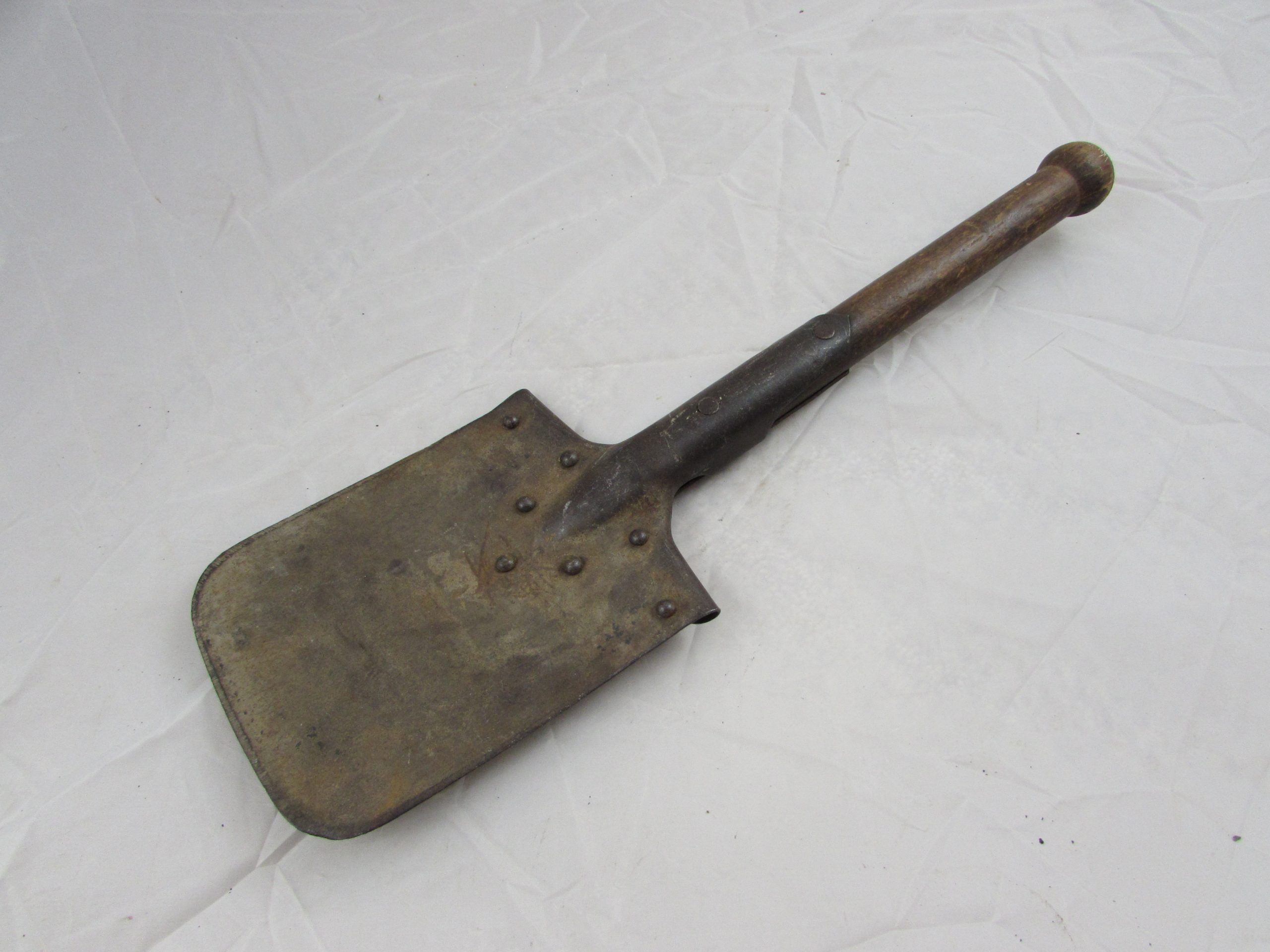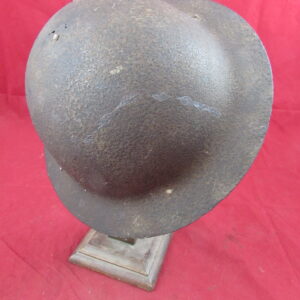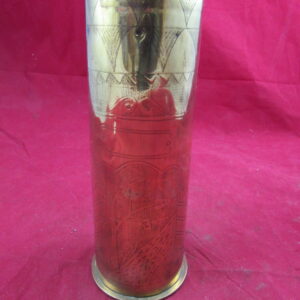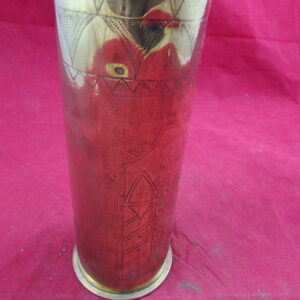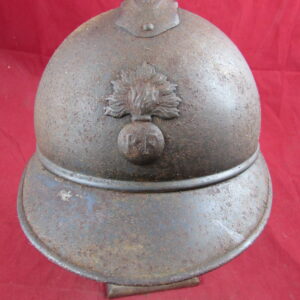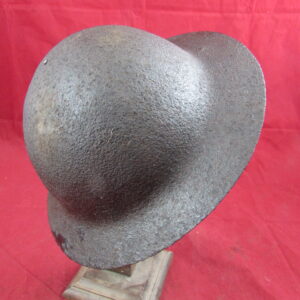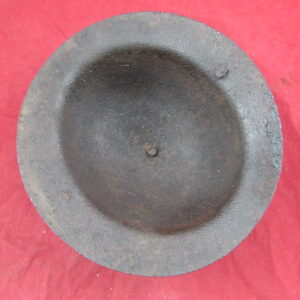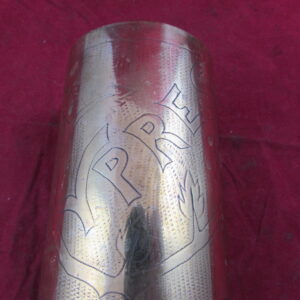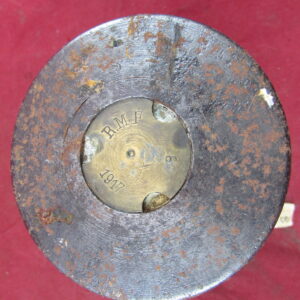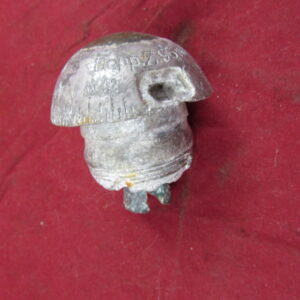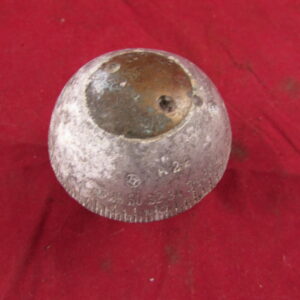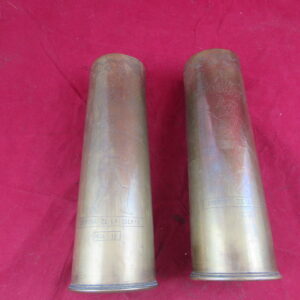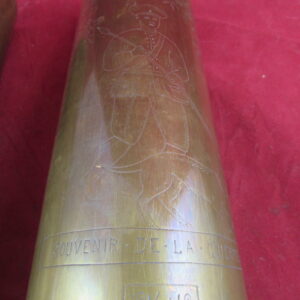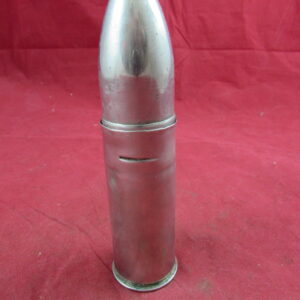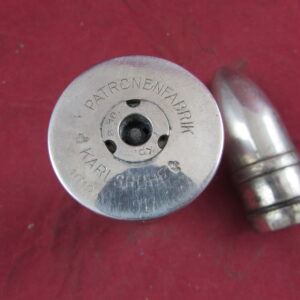WW1 British Artillery Fuse, No 80
Views: 1296
£25.00
WW1 British Artillery Fuse, No 80
- Description
- Shipping and Delivery
Description
WW1 British Artillery Fuse, No 80
This is time and percussion fuze No 80 , usually used with the British shrapnel shells of the famous 18 pounder field guns.
This is a used and dug up piece that has been cleaned up nicely and has a nice patina.
Britain entered World War I with a policy of using shrapnel shells for its field guns (13-pounder and 18-pounder), intended to burst above head-height for anti-personnel use. British heavy artillery was expected to attack fortifications, requiring high-explosive shells to penetrate the target to some extent before exploding. Hence British artillery fuzes were optimised for these functions. Experiences of trench warfare on the Western front in 1914–1916 indicated that British artillery was unable to reliably destroy barbed-wire barricades, which required shells to explode instantaneously on contact with the wire or ground surface: British high-explosive shells would penetrate the ground before exploding, rendering them useless for destroying surface targets.
British No. 100 and later Nos. 101, 102 and 103 nose “graze” fuzes available in the field from August 1915 onwards[1] could explode a high-explosive shell very quickly on experiencing a major change in direction or velocity, but were not “instantaneous”: there was still some delay in activation, and limited sensitivity: they could not detect contact with a frail object like barbed wire or soft ground surface. Hence they would penetrate objects or ground slightly before detonating, instead of on the ground surface as required for wire cutting.[2] These graze and impact fuzes continued to be used as intended for medium and heavy artillery high-explosive shells.
Up to and including the Battle of the Somme in 1916, British forces relied on shrapnel shells fired by 18-pounder field guns and spherical high-explosive bombs fired by 2-inch “plum-pudding” mortars for cutting barbed-wire defences. The disadvantage of shrapnel for this purpose was that it relied on extreme accuracy on setting the fuze timing to burst the shell close to the ground just in front of the wire: if the shell burst fractionally too short or too long it could not cut the wire, and also the spherical shrapnel balls were not of an optimal shape for cutting strands of wire. While the 2-inch mortar bombs cut wire effectively, their maximum range of 570 yards (520 m) limited their usefulness.
WW1 British Artillery Fuse, No 80
At this time, Antiqurio ships to locations within the United Kingdom mainland. Items can be shipped worldwide by prior agreement please contact us. The risk of loss and title for all items ordered on this website pass to you when the items is delivered to the shipping carrier. We are unable to calculate shipping automatically for multiple items when shipping internationally please contact us by email if you wish to purchase more than one item and live outside of the UK; we are working to resolve this
International
Customs and import duties may be applied to International orders when the shipment reaches its destination. This is not imposed by Antiqurio and these charges are the responsibility of the recipient of your order and are likely to vary from country to country. Contact your local customs office for details.
Shipping laws are different in each country. It is your responsibility to check with your Customs office to verify whether the country to which you are shipping permits the shipment of your products. Antiqurio is not responsible for any direct, indirect, punitive, or consequential damages that arise from improper international shipping practices.


